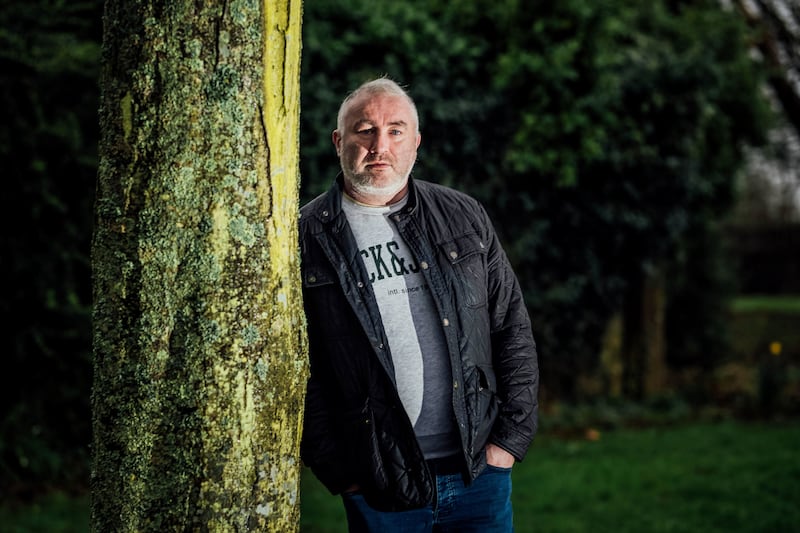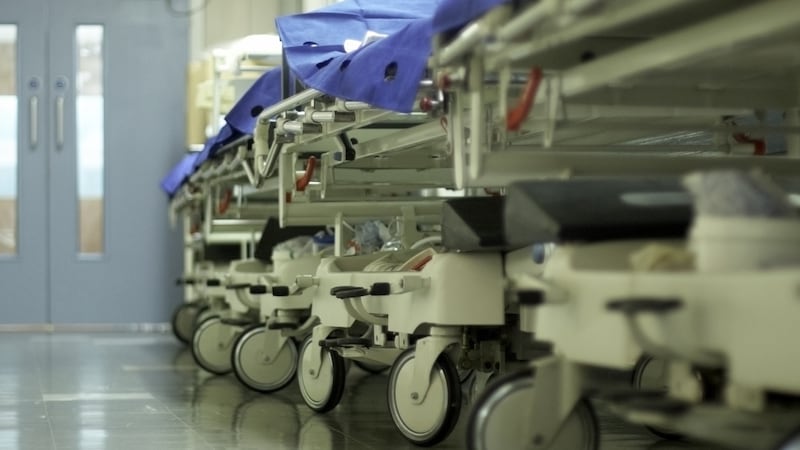The imminent publication of a report on the death of a teenager at University Hospital Limerick promises to thrust one of the worst black spots in the health service back into the limelight.
The report by former chief justice Frank Clarke will address the contributory factors within UHL that led to 16-year-old Aoife Johnston’s death there in late 2022, as well as the specific circumstances of that individual tragedy.
In truth, UHL has seldom been out of the public eye, thanks to chronic overcrowding and a series of tragic deaths of patients, often occurring after long waits for care.
The problems in the hospital have worsened despite significant additional investment, two critical reports from the health service regulator, the Health Information and Quality Authority, the dispatch from Dublin of a team of HSE officials said to be experts in managing the flow of patients, and repeated political hand-wringing.
READ MORE
Two years ago, The Irish Times quoted words such as “war-zone”, “catastrophe” and “trolley park” in an article on the hospital’s performance. The reviews have not improved since.
“People are frightened of their life to go there, even for a minor procedure,” says Mike Daly, who has organised several recent protests over overcrowding at UHL. “The hospital is filthy, it’s a deathtrap.”
“People say they are afraid of the place, they worry what will happen them if they fall ill. There’s a real sense of fear,” says Melanie Cleary, mother of 21-year-old Eve, whose death from a lung clot occurred shortly after a 17-hour spell on a trolley in the hospital in 2019.

“As residents in the area, many of us are terrified to get sick and have the need to go there,” one local said.
“The stories in the media have done nothing to lessen the fear and panic at the idea of any loved one needing to attend in the future.”
The question is why the hospital, despite all this attention, continues to condemn incoming patients to lengthy waits, thereby running the risk of adverse outcomes.
Since December 2019, as Minister for Health Stephen Donnelly points out, more than 1,000 extra staff have been hired in Limerick. Today, there are 146 more doctors, 45 more consultants and 348 more nurses and midwives working there, yet overcrowding has worsened
The answer depends on who you talk to. The default reply locally is that UHL is short of resources, principally beds and an alternative emergency department in the region. A reconfiguration of services in 2009 saw the closure of emergency departments in Ennis, Nenagh and St John’s in Limerick city, and their replacement by minor injury units that shut their doors at 8pm.
That left the midwest with only one model 4 hospital, the biggest type of hospital that has a 24/7 emergency department, an intensive care unit (ICU) and specialities.
“It’s a mathematical problem,” says Daly. “You have over 400,000 people heading to one A&E in the region when there are five or six of them in Dublin. It will never be fixed until they are reopened.”
By way of comparison with the midwest, the south/southwest has a catchment population of 900,000, two model 4 hospitals and three model 3 hospitals, a type of hospital that provides 24/7 acute surgery and medicine, and critical care.
The West/northwest has a population of 800,000, one model 4 hospital and four model 3 hospitals. Limerick and the midwest have no model 3 hospitals to take the pressure off UHL.
Yet the call by the Midwest Hospital Campaign, a local group of campaigners, seeking the reopening of emergency departments in Ennis, Nenagh and St John’s, has struggled to gain traction. Even opposition politicians are mindful of the safety issues that prompted their original downgrading. Small hospitals have too little throughput of serious cases for staff to maintain their skills.
Even if a political decision were made to reopen an emergency department, where would it go? There seems little prospect of the three hospitals being upgraded.
Local injury units in Ennis and Nenagh have been beefed up, and St John’s is performing surgery. These facilities are said to be relatively quiet, even as UHL bursts at the seams.
While the hospital claims it is under-resourced, it has benefited from substantial investment – more than any other hospital. Since December 2019, as Minister for Health Stephen Donnelly points out, more than 1,000 extra staff have been hired in Limerick. Today, there are 146 more doctors, 45 more consultants and 348 more nurses and midwives working there, yet overcrowding has worsened.
Over the same period, its budget has grown by 45 per cent, 100 extra beds have been opened and construction started on a 96-bed inpatient block. A second 96-bed block is on the way. Even allowing for the increase in hospital attendances nationally since the Covid-19 pandemic, that seems like a poor return on investment.
“If this were a private business, everyone in upper management would have been sacked by now. There’s a lot of mismanagement,” says Daly, whose father, also Mike, died in 2010 following a procedure in the hospital.

An inquest found he died of natural causes, but following Daly’s investigations, a second inquest was held and returned a verdict of medical misadventure.
“It’s not about resources. We have plenty of money but no governance,” said one doctor who has worked at UHL and other hospitals.
“System failure is the problem. When patients come in, we’re not triaging their needs quickly enough. We’re seeing them too late. There aren’t enough decision-makers on the floor.”
In an overcrowded environment, the doctor explains, the sickest patients still get identified, while those who are not sick often leave after a long wait: “It’s the in-between patients who end up not being triaged quickly enough and seen in time.”
‘There was a confidence issue with the old management structures, but now everyone needs to give these new appointments a chance to make a difference’
— Fine Gael senator Martin Conway
There is evidence to suggest the hospital is not coping with demand as efficiently as it might. UHL has the second-lowest level of weekend discharges of any hospital. The fewer patients dealt with at weekends, the more remain in the hospital early in the week, contributing to overcrowding.
The hospital’s emergency department has also been providing less consultant cover during the week than other model 4 hospitals, resulting in fewer decision-makers on-site to make key decisions about admitting and discharging patients.
Just one consultant was rostered after 5pm on weekdays (working up to 8pm and on-call after that), whereas in University Hospital Waterford, which has the lowest number of patients on trolleys, senior staff are on-site up to 11pm.
The single consultant on-call in the emergency department over the weekend “cannot be present all the time,” an initial report on Aoife Johnston’s death noted. “This has led to an expectation gap.”

This report also highlighted the high turnover in nursing and junior doctor staff, leading to “low experience levels and low situational awareness”.
Admittedly, some of the hospital’s problems begin outside its doors. The midwest has an above-average number of older patients and above average levels of deprivation. Local out-of-hours GP services rely heavily on locums, who are more likely to refer patients to hospital. Difficulties in obtaining GP appointments lead to patients self-referring to hospital; even if not admitted, they absorb staff time and hospital resources. The region also lacks sufficient step-down beds and nursing home places.
The hospital has managed to make inroads into outpatient waiting lists, and areas such as cancer care get good reviews.
In the absence of real change, locals are marching with their feet. When Siobhán MacGowan, sister of the late Pogues singer Shane MacGowan, brought their 94-year-old father Maurice to the hospital’s emergency department recently. He waited so long overnight on a trolley that she took him out and drove him to a hospital in Dublin.
There is, understandably, intense focus on any deaths that occur in the hospital. In recent weeks, the death of another 16-year-old girl, and that of a 33-year-old new mother, have caused concern. The HSE issued a statement after the second death urging people not to “jump to conclusions”, but has yet to shed more light on the circumstances of either case, or indicate whether they need to be substantively reviewed.
[ New antibiotic-resistant bug discovered in University Hospital LimerickOpens in new window ]
As part of wider national reforms, many HSE operations are being devolved to the regions. Late last year, Sandra Broderick took up the role of regional executive officer for all health services in the midwest, directly reporting to chief executive Bernard Gloster. Soon after, Colette Cowan, long-time head of the local hospital group, went on leave. She has since been replaced on an interim basis.
“There was a confidence issue with the old management structures, but now everyone needs to give these new appointments a chance to make a difference. I would call on consultants to make an extra effort to support the new management team,” says local Fine Gael senator Martin Conway.
A solution of UHL’s woes will not come quickly. It will involve stronger leadership, longer hours of consultant cover, the incremental addition of more beds and other resources, greater diversion of non-urgent patients to other facilities and more options in the community for step-down care.
The only certainty is that more tragedies will occur so long as patients suffer long delays in treatment.
Responding to queries from The Irish Times, UHL said that, notwithstanding significant investment in infrastructure and staffing, the hospital still operated above capacity and lacked beds.
Occupancy rose to 110 per cent in the first half of last year, well over the maximum rate of 85 per cent proposed by the Department of Health.
Although the gap with other regions is closing, the midwest has the second lowest bed capacity in the country, a spokesman said.
The midwest also has the lowest private bed capacity of all regions, while 200 out of the current 530 beds in UHL are in multi-occupancy wards.
The number of patients presenting at the hospital’s emergency department is up 17 per cent on last year; among those aged over 75s, the increase is 22 per cent, he said. The emergency department had its busiest day ever last Tuesday, when 317 patients attended.
Asked about levels of consultant cover, the spokesman said newly appointed consultants were working until 10pm “when rostered as per the new consultant contract”.
Under current arrangements, “at least one consultant, and on a number of days, two consultants,” see patients in the emergency department up to 8pm on weekdays.
University Hospital Limerick in numbers
400,000 – the size of the population in the midwest region covered by the hospital
530 – the number of inpatient beds in the hospital
149 – the number of day-case beds
150 – the number of admitted patients waiting for an in-hospital bed at UHL on February 7th, a record
302 – the number of additional beds potentially required to meet the projected future population needs of the midwest region
79,644 – the number of attendances at UHL’s emergency department in 2022, second highest level of attendances of all similar (Model 4) hospitals in the State
105% – the occupancy rate of hospital beds at UHL in 2022; the maximum operating occupancy rate proposed by Department of Health is 85 per cent
1,844 – the average number of minutes (30 hours 44 minutes) it took to make a decision to admit someone to an inpatient bed during a regulatory inspection on February 21st, 2023
2,247- the number of patients who went without a bed in February 2024, making UHL the most overcrowded hospital in the State (the next highest was Cork University Hospital with 1,070 patients)
Source: Hiqa inspection report, 2023; Irish Nurses and Midwives Organisation
- See our new project Common Ground, Evolving Islands: Ireland & Britain
- Sign up for push alerts and have the best news, analysis and comment delivered directly to your phone
- Find The Irish Times on WhatsApp and stay up to date
- Our In The News podcast is now published daily – Find the latest episode here


















